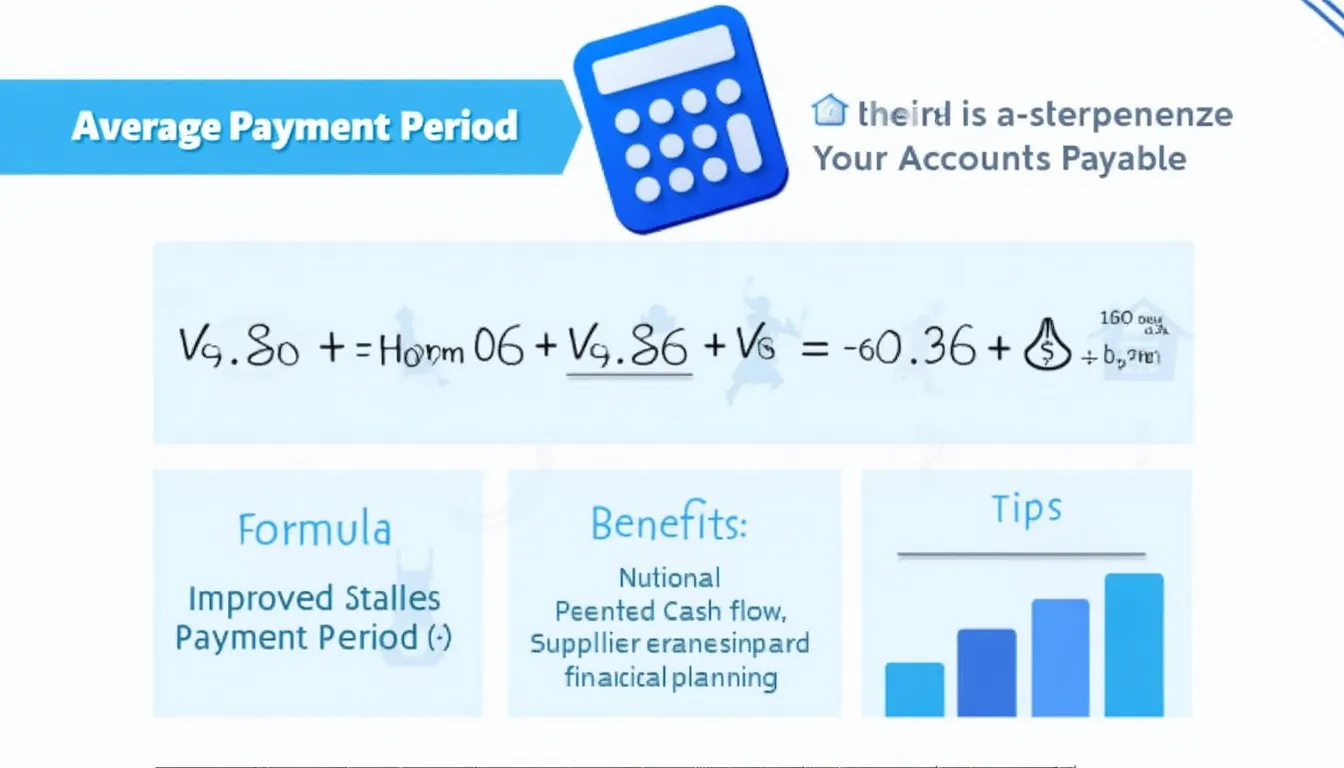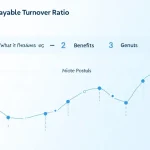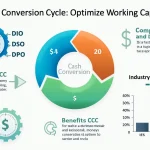Average Payment Period Calculator
Is this tool helpful?
Average Payment Period Calculator: Optimize Your Accounts Payable Management
How to Use the Average Payment Period Calculator Effectively
Our Average Payment Period Calculator is designed to help businesses efficiently manage their accounts payable and assess their payment practices. To use this tool effectively, follow these simple steps:
- Enter your Beginning Accounts Payable amount in dollars.
- Input your Ending Accounts Payable amount in dollars.
- Provide the Total Credit Purchases for the period in dollars.
- Click the “Calculate” button to generate your results.
The calculator will then display your Average Accounts Payable and Average Payment Period in days, giving you valuable insights into your company’s payment practices.
Understanding the Average Payment Period: Definition, Purpose, and Benefits
The Average Payment Period, also known as the Creditors Payment Period or Days Payable Outstanding (DPO), is a crucial financial metric that measures the average number of days a company takes to pay its suppliers and creditors. This metric provides valuable insights into a company’s cash management practices, liquidity, and overall financial health.
Definition
The Average Payment Period is calculated by dividing the average accounts payable by the daily credit purchases. It represents the average time frame between when a company makes a credit purchase and when it settles the corresponding invoice.
Purpose
The primary purpose of calculating the Average Payment Period is to assess a company’s efficiency in managing its short-term liabilities and cash flow. This metric helps businesses:
- Evaluate their payment practices and policies
- Identify opportunities to improve cash flow management
- Assess relationships with suppliers and creditors
- Compare their performance against industry benchmarks
- Make informed decisions about working capital management
Benefits
Understanding and optimizing your Average Payment Period can lead to numerous benefits for your business:
- Improved cash flow management
- Enhanced supplier relationships
- Better negotiation power for payment terms
- Increased financial stability
- More accurate financial planning and forecasting
- Identification of potential cash flow issues before they become critical
The Mathematical Formula Behind the Average Payment Period Calculator
Our Average Payment Period Calculator uses the following formula to determine the number of days it takes a company to pay its suppliers:
$$ \text{Average Payment Period} = \frac{\text{Average Accounts Payable}}{\text{Daily Credit Purchases}} $$Where:
$$ \text{Average Accounts Payable} = \frac{\text{Beginning Accounts Payable} + \text{Ending Accounts Payable}}{2} $$$$ \text{Daily Credit Purchases} = \frac{\text{Total Credit Purchases}}{365} $$By combining these formulas, we get:
$$ \text{Average Payment Period} = \frac{(\text{Beginning Accounts Payable} + \text{Ending Accounts Payable}) / 2}{(\text{Total Credit Purchases} / 365)} $$How the Average Payment Period Calculator Addresses User Needs
Our Average Payment Period Calculator is designed to address several key user needs and solve specific problems related to accounts payable management:
1. Quick and Accurate Calculations
Manual calculations of the Average Payment Period can be time-consuming and prone to errors. Our calculator eliminates these issues by providing instant, accurate results based on the input data.
2. Simplified Data Input
Users only need to input three key figures: Beginning Accounts Payable, Ending Accounts Payable, and Total Credit Purchases. This simplifies the process and makes it accessible even for those without extensive financial knowledge.
3. Clear Result Presentation
The calculator presents results in a clear, easy-to-understand format, displaying both the Average Accounts Payable and the Average Payment Period in days.
4. Flexibility for Different Time Periods
While the calculator assumes a 365-day year, users can easily adapt it for different time periods by adjusting their input data accordingly.
5. Decision-Making Support
By providing quick insights into payment practices, the calculator supports informed decision-making regarding cash flow management and supplier relationships.
Practical Applications and Example Calculations
Let’s explore some practical applications of the Average Payment Period Calculator through example calculations:
Example 1: Retail Company XYZ
XYZ Retail has the following financial data:
- Beginning Accounts Payable: $75,000
- Ending Accounts Payable: $85,000
- Total Credit Purchases: $600,000
Using our calculator:
- Average Accounts Payable: ($75,000 + $85,000) / 2 = $80,000
- Average Payment Period: ($80,000 / ($600,000 / 365)) ≈ 48.67 days
Interpretation: XYZ Retail takes an average of about 49 days to pay its suppliers. This information can help the company assess whether it’s maintaining good relationships with suppliers or if it needs to improve its payment practices.
Example 2: Manufacturing Company ABC
ABC Manufacturing has the following data:
- Beginning Accounts Payable: $250,000
- Ending Accounts Payable: $300,000
- Total Credit Purchases: $1,800,000
Using our calculator:
- Average Accounts Payable: ($250,000 + $300,000) / 2 = $275,000
- Average Payment Period: ($275,000 / ($1,800,000 / 365)) ≈ 55.76 days
Interpretation: ABC Manufacturing takes about 56 days on average to pay its suppliers. This longer payment period might indicate that the company is leveraging its accounts payable to manage cash flow, but it should also consider the potential impact on supplier relationships.
Example 3: Service Company PQR
PQR Services has the following financial information:
- Beginning Accounts Payable: $30,000
- Ending Accounts Payable: $40,000
- Total Credit Purchases: $400,000
Using our calculator:
- Average Accounts Payable: ($30,000 + $40,000) / 2 = $35,000
- Average Payment Period: ($35,000 / ($400,000 / 365)) ≈ 31.94 days
Interpretation: PQR Services has a relatively short Average Payment Period of about 32 days. This could indicate efficient cash management practices or potentially favorable payment terms with suppliers. However, the company might want to explore if there are opportunities to extend this period slightly to improve working capital without straining supplier relationships.
Frequently Asked Questions (FAQ)
1. What is a good Average Payment Period?
There’s no one-size-fits-all answer to what constitutes a “good” Average Payment Period, as it can vary by industry and individual business circumstances. Generally, a balance should be struck between maintaining good supplier relationships and optimizing cash flow. Many businesses aim for an Average Payment Period between 30 to 60 days, but it’s essential to consider industry norms and your specific financial situation.
2. How does the Average Payment Period affect cash flow?
A longer Average Payment Period can improve short-term cash flow by allowing a company to retain cash for a longer period. However, it’s crucial to balance this with maintaining good supplier relationships and avoiding late payment penalties. Conversely, a shorter Average Payment Period might indicate efficient processes but could potentially strain cash flow if not managed properly.
3. Can I use this calculator for different time periods?
Yes, you can adapt the calculator for different time periods. The calculator assumes a 365-day year, but you can adjust your input data proportionally for shorter or longer periods. For example, for a quarterly analysis, you would use the accounts payable figures for the start and end of the quarter, and the credit purchases for that quarter.
4. How often should I calculate my Average Payment Period?
The frequency of calculation depends on your business needs and the volatility of your accounts payable. Many companies calculate it monthly or quarterly to track trends and make timely adjustments to their payment practices. However, for businesses with more stable accounts payable, semi-annual or annual calculations might be sufficient.
5. What if my Average Payment Period is increasing?
An increasing Average Payment Period could indicate that your company is taking longer to pay its suppliers. This might be a deliberate strategy to improve short-term cash flow, or it could signal potential cash flow problems. It’s important to analyze the reasons behind the increase and consider its impact on supplier relationships and your company’s credit standing.
6. How does the Average Payment Period relate to the Cash Conversion Cycle?
The Average Payment Period is one component of the Cash Conversion Cycle (CCC), which measures how long it takes for a company to convert its investments in inventory and other resources into cash flows from sales. A longer Average Payment Period can help reduce the CCC, potentially improving working capital management.
7. Can this calculator be used for personal finances?
While the Average Payment Period is primarily a business metric, the concept can be applied to personal finances. For individuals, it could represent how long it takes to pay off credit card balances or other forms of credit. However, the calculation would need to be adapted to fit personal financial scenarios.
Please note that while we strive for accuracy and reliability, we cannot guarantee that our webtool or the results it provides are always correct, complete, or reliable. Our content and tools may contain errors, biases, or inconsistencies. Always use professional judgment and consult with financial experts when making important financial decisions.
Conclusion: Harnessing the Power of the Average Payment Period Calculator
The Average Payment Period Calculator is a powerful tool for businesses seeking to optimize their accounts payable management and improve overall financial health. By providing quick, accurate insights into payment practices, this calculator empowers companies to:
- Gain a clear understanding of their payment efficiency
- Identify opportunities to improve cash flow management
- Benchmark performance against industry standards
- Make informed decisions about supplier relationships and payment terms
- Enhance overall financial planning and forecasting
By regularly calculating and monitoring your Average Payment Period, you can strike the right balance between maintaining strong supplier relationships and optimizing your working capital. This balance is crucial for sustainable business growth and financial stability.
We encourage you to use our Average Payment Period Calculator as part of your regular financial analysis routine. By doing so, you’ll be better equipped to make strategic decisions that enhance your company’s financial performance and competitive position in the market.
Remember, while the Average Payment Period is a valuable metric, it should be considered alongside other financial indicators for a comprehensive view of your company’s financial health. Use this tool in conjunction with other financial analyses and expert advice to drive your business towards greater financial success.
Take control of your accounts payable management today – use our Average Payment Period Calculator and unlock the potential for improved financial performance and stronger supplier relationships!
Important Disclaimer
The calculations, results, and content provided by our tools are not guaranteed to be accurate, complete, or reliable. Users are responsible for verifying and interpreting the results. Our content and tools may contain errors, biases, or inconsistencies. We reserve the right to save inputs and outputs from our tools for the purposes of error debugging, bias identification, and performance improvement. External companies providing AI models used in our tools may also save and process data in accordance with their own policies. By using our tools, you consent to this data collection and processing. We reserve the right to limit the usage of our tools based on current usability factors. By using our tools, you acknowledge that you have read, understood, and agreed to this disclaimer. You accept the inherent risks and limitations associated with the use of our tools and services.







